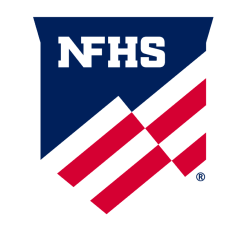
Risk Minimization, Skill Development Focus of 2024-25 High School Spirit Rules Changes
- Rule 3-3-5 c&d now allows the bracers in a braced flip to descend into a load as the braced flip is coming down and going to cradle. It still requires braces to be in the preps at the beginning of the flip.
- Rule 3-3-6c3 adds language that disallows the top person to go directly from an upright vertical position at prep level to an inverted position.
- Rule 3-4-2 was changed to Rule 3-2-10 as it fits better in that section.
- Rule 3-6-5 adds language regarding a vertical seated/ pike position. When starting form a vertical seated/pike position at prep level or above, the top person may not perform any twist to a vertical seated/pike position.
- Rule 4-1-3b2 adds language that permits kip ups and headsprings to no longer require footwear that covers the whole foot. The impact of kip ups and headsprings do not pose a significant risk because they are only airborne in approach.
- Rule 4-5-3 added language regarding the restriction of non-braced release stunts. Dance participants are already not allowed to do braced releases, and doing a release while braced is used as a lead-up skill.
# # #
About the National Federation of State High School Associations (NFHS)
The NFHS, based in Indianapolis, Indiana, is the national leadership organization for high school sports and performing arts activities. Since 1920, the NFHS has led the development of education-based interscholastic sports and performing arts activities that help students succeed in their lives. The NFHS sets direction for the future by building awareness and support, improving the participation experience, establishing consistent standards and rules for competition, and helping those who oversee high school sports and activities. The NFHS writes playing rules for 17 sports for boys and girls at the high school level. Through its 50 member state associations and the District of Columbia, the NFHS reaches more than 19,800 high schools and 12 million participants in high school activity programs, including more than 8 million in high school sports. As the recognized national authority on interscholastic activity programs, the NFHS conducts national meetings; sanctions interstate events; offers online publications and services for high school coaches and officials; sponsors professional organizations for high school coaches, officials, speech and debate coaches, and music adjudicators; serves as the national source for interscholastic coach training; and serves as a national information resource of interscholastic athletics and activities. For more information, visit the NFHS website at www.nfhs.org.









